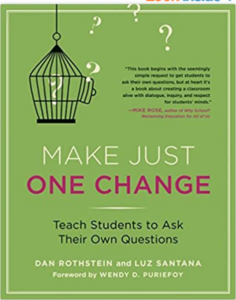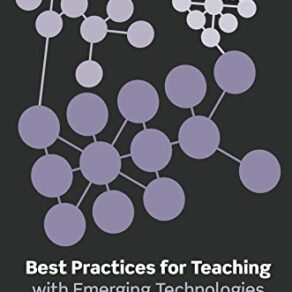Human beings are inquirers by nature and it is this inner ability to ask questions and seek answers that was behind the rise of civilization and the progress humanity achieved up to this point in time. From discovering fire to launching space rockets and plans to populate Mars, questions have been the locomotive that drive human’s greed for knowledge and exploration.
In Make Just One Change: Teach Students to Ask Their Own Questions, Dan Rothstein and Luz Santana explore the potential of questions as learning tools arguing that the ability to create and ask questions is “the single most essential skill for learning”. The main argument of the book is that for our students to achieve excellence and thrive as lifelong learners, we need to teach them the skill of question formulation.
The authors have provided several examples of how question asking can lead to new ideas, new solutions, greater engagement, and deeper learning experiences. Question formulation, they contend, empowers students with the thinking skills that will enable them to not only improve their learning but, most importantly, take ownership of the whole process .
In showing teachers the importance of deliberately teaching students how to pose pertinent questions, the authors move from the discussion of why this should be the case to how teachers can do it effectively through a step by step process. Make Just One Change: Teach Students to Ask Their Own Questions allows students to discover how powerful questions are in guiding their own learning and improving their self-advocacy competencies.
The authors’ goal is for teachers and educators to embrace this important skill of question formulation technique and use in their classrooms instruction with students.. The authors believe that “people get better at asking questions, generating productive questions, and then figure out just the right questions for them to be asking if they have the ability to ask questions.”
Make Just One Change will show how the process of question formulation is used in a wide range of communities and schools, with students of all ages and levels of academic readiness. There are examples of individual teachers using the QFT (Question Formulation Technique ) in their own classrooms and of teachers working together to build and reinforce the skill of question asking across different subject areas and for different purposes within schools. The students deploy their new skills to help them write essays, and read challenging texts,identify and refine research questions, design experiments, unpack mathematical formulas, plan socratic seminars, and even create homework assignments for themselves.Through these examples you can quickly see how to easily use the QFT to strengthen and enrich your lesson plans and attain your most ambitious teaching and curricular goals.
Make Just One Change: Teach Students to Ask Their Own Questions by Dan Rothstein, Luz Santana.






